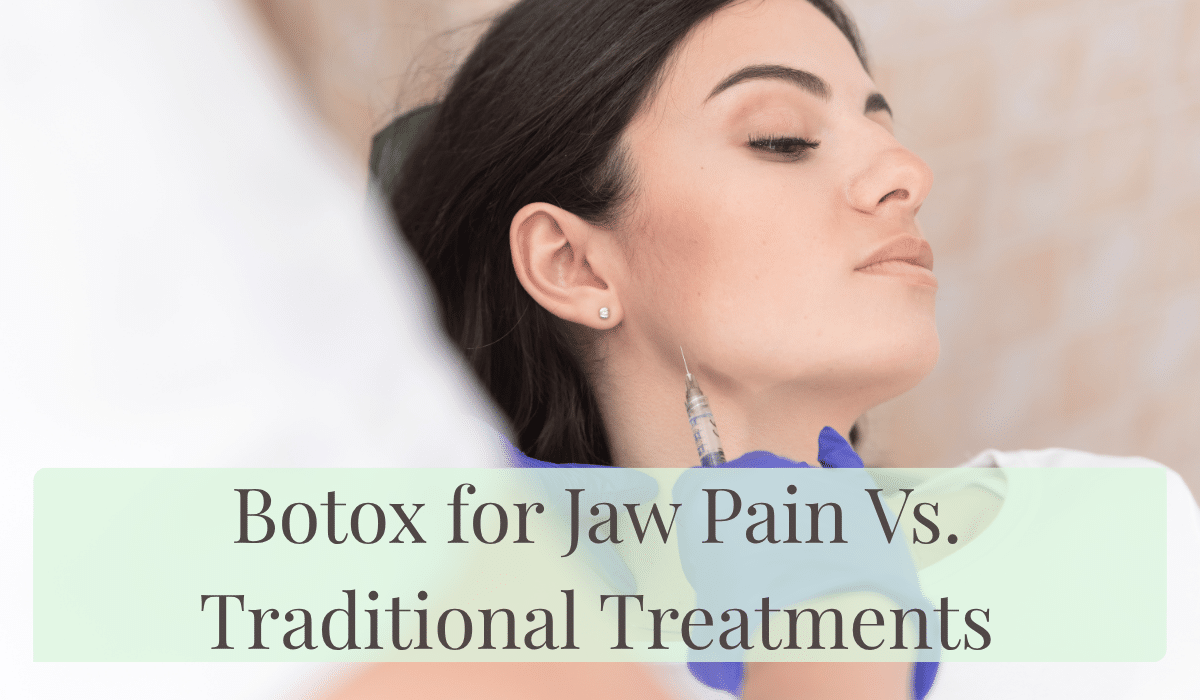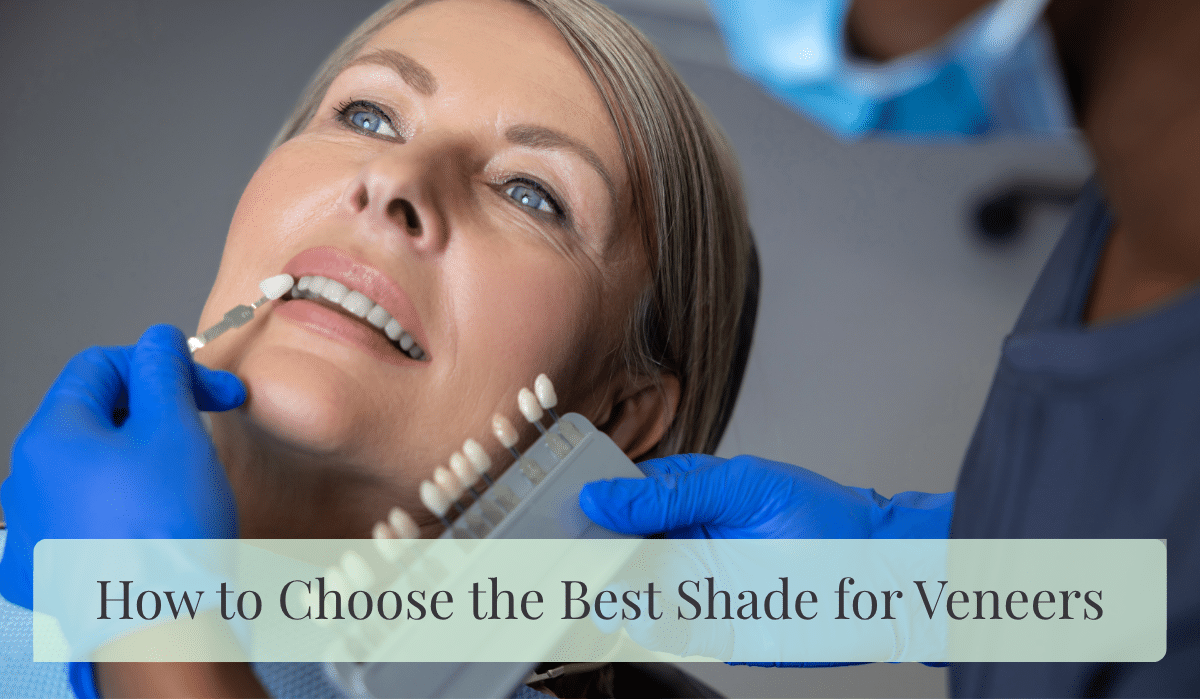Temporomandibular joint (TMJ) disorders affect many Americans, which is causing more people to ask their dentist about Botox for jaw pain vs. traditional treatments. The effects of TMJ related jaw pain can cause an extensive range of symptoms that include clicking sounds, headaches, jaw pain, restricted mouth opening, and difficulty chewing. TMJ disorder entails dysfunction of the temporomandibular joint that joins the lower jaw to the skull, as well as other muscles and ligaments in the area. The complications associated with TMJ disorder comes from numerous possible causes, including structural irregularities, teeth grinding (bruxism), jaw traumas, stress, and even arthritis.
Conventional treatment options have been the main TMJ pain control for years, but Botox for jaw pain has become another viable jaw pain treatment option. Understanding the distinctions between these methods allows patients and providers to make educated decisions about their treatment choices based on independent situations, seriousness of symptoms, and treatment goals.
What are the Differences Between Botox and Traditional Treatments for Jaw Pain?
There are many differences in the available treatment options for jaw pain, including TMJ disorder. Here is a comparison of the available options for patients:
Traditional Jaw Pain Management Plans
Traditional treatment for jaw pain often starts with conventional, reversible therapies that acknowledge symptoms without making lasting changes to jaw structure or function. Some of these methods include the following:
- Medications: Anti-inflammatory drugs, also called NSAIDs, may lessen joint swelling and pain while muscle relaxers assist with helping to reduce jaw muscle tension.
- Physical Therapy: TMJ physical therapy involves jaw exercises, postural correction, education, and manual therapy.
- Oral Devices and Splints: Custom mouth guards can be worn during sleep which helps stop teeth grinding. This reduces stress on the jaw. These tools help resettle the jaw. Success rates are varied, but many patients experience less symptoms for nighttime bruxism related pain. Ongoing relief requires the mouth guard to be worn nightly.
- Lifestyle Changes: Changing your diet, stress management skills, and behavioral adjustments are taught to help lessen jaw pain. Patients learnt to identify and and correct detrimental habits like jaw clenching.
- Medications: Anti-inflammatory drugs, also called NSAIDs, may lessen joint swelling and pain while muscle relaxers assist with helping to reduce jaw muscle tension.
Surgical Involvement
When traditional methods don’t work, conventional surgical options include:
- Arthroscopy: surgeons repair damaged tissue, remove debris or reposition the articular disc using a small instrument and a small camera. This is a minimally invasive method and has a faster recovery than open surgery but still deals with structural problems.
- Arthrocentesis: This is a minimally invasive procedure that involves flushing the joint area to remove any inflammatory debris and improve joint lubrication. It is an outpatient procedure and can offer some pain relief for some types of TMJ disorders.
- Open Joint Surgery: this is reserved for the most severe cases. This method allows straight access to repair or even replace injured joint components. While it is effective for structural issues, it has more risks and lengthy recovery times.
- Arthroscopy: surgeons repair damaged tissue, remove debris or reposition the articular disc using a small instrument and a small camera. This is a minimally invasive method and has a faster recovery than open surgery but still deals with structural problems.
How Does Botox Work?
Botox works for jaw pain by blocking nerve signals to targeted muscles, causing selective muscle relaxation that can last for about 3-4 months. In some studies, it was found that Botox could decrease pain for three months following treatment. For TMJ disorders, Botox is usually injected into the temporalis and masseter muscles since these are the two muscles that we use to clench our jaws and grind our teeth.
What Can Patients Expect During Treatment?
Botox injections can be given in multiple facial muscles like the jaw, temples, or forehead. Your dentist will examine your face, jaw, cheek, and neck and talk to you about any symptoms you’ve been having. The injections are done in the office and take anywhere from 10-30 minutes to be completed. Many patients require the injections to be administered in multiple sessions over a few months for the best results.
Patients often start noticing relief within several days to two weeks after their appointment. Botox injections for jaw pain are temporary which means regular treatments are required to continue getting benefits. Patients usually opt to get injections every 3-4 months.
What are the Advantages of Botox for Jaw Pain?
When patients are considering Botox for jaw pain vs. traditional treatments, the advantages of Botox are often what determines their decision, including the following reasons:
- Quick procedure: Treatment times are short and can be easily included into a busy day without disorganizing the patient’s schedule.
- Minimally Invasive: Botox injections don’t call for surgery, recovery time, or anesthesia. Patients can go back to their normal life immediately afterwards.
- Targeted Relief: By particularly targeting jaw muscles, Botox hits one of the main mechanisms behind TMJ pain, which is muscle hyperactivity and spasms.
- Cosmetic Benefits: Many people see cosmetic improvements like a slimmer jawline and better facial symmetry.
- Quick procedure: Treatment times are short and can be easily included into a busy day without disorganizing the patient’s schedule.
What are the Limitations of Botox for Jaw Pain?
While the benefits of these injections are clear, it’s important to understand their limitations as well, which include:
- Temporary solution: Botox does not cure the cause of jaw pain or TMJ. It provides symptom relief without dealing with any of the fundamental structural issues.
- Limited research: The base of evidence for Botox in TMJ treatment is small compared to conventional therapies. However, there are very encouraging preliminary results coming out, including many happy patients.
- Temporary solution: Botox does not cure the cause of jaw pain or TMJ. It provides symptom relief without dealing with any of the fundamental structural issues.
What are the Advantages of Traditional Treatments?
- Insurance coverage: Many conventional treatments for jaw pain are covered by dental or medical insurance, allowing them to be more attainable to patients.
- Address Main Causes: Traditional methods are typically aimed at the main cause of what’s going on like bite issues, structural problems, or behavioral factors contributing to TMJ disorders.
What are the Limitations of Traditional Treatments?
Here of some of the limitations of traditional treatments that are causing more patients to choose Botox for jaw pain:
- Fluctuating success: Not every patient has the same outcomes and reacts the same to conventional treatments, specifically those with severe symptoms or complex cases.
- Lifestyle impact: Wearing mouth devices, following diet restrictions, and going to regular therapy can be difficult and demand significant patient acceptance.
- Time-intensive: Traditional treatment methods typically take weeks or months to show meaningful improvement, and some treatments demand long-term devotion.
- Surgical risks: When traditional treatments don’t work, surgical methods may be an option, but surgery has risks that include infection, nerve damage, and the potential of even worse symptoms.
- Fluctuating success: Not every patient has the same outcomes and reacts the same to conventional treatments, specifically those with severe symptoms or complex cases.
When Should You Consider Getting Botox for Jaw Pain?
If you are experiencing jaw pain that interferes with your daily life, speak with your Kingwood dentist to determine if Botox injections are an option for you. Ideal candidates are usually patients with TMJ pain that hasn’t responded to traditional treatments, inability to take oral medication, and desire for a minimally invasive option.
A Kingwood Dentist Can Provide the Ideal Treatment for Your Jaw Pain
Botox and traditional treatments for jaw pain can both be effective, and a knowledgeable Kingwood dentist can help their patients determine which is the best option for them. By considering the advantages and limitations of each treatment option, you can feel confident and prepared to seek treatment and have a meaningful conversation with your dentist.
Don’t let jaw pain interfere with your life any longer. Make an appointment with your Kingwood dentist today and discover the relief you deserve, which will give you a renewed reason to smile and allow you to enjoy everyday activities pain free.
- How Can Cosmetic Dentistry Improve More Than Just Your Appearance? - December 5, 2025
- How to Choose the Best Shade for Veneers - October 8, 2025
- How Your Dentist Plans a Smile Makeover: Step-by-Step Guide to Your New Smile - September 2, 2025




